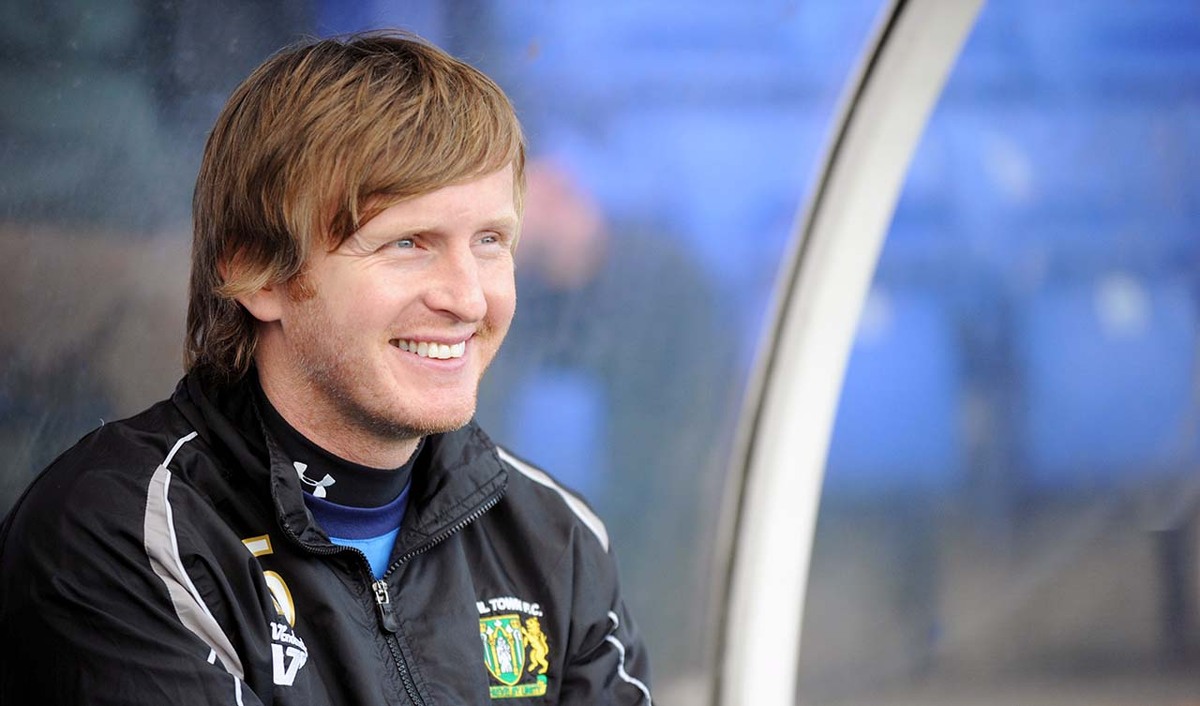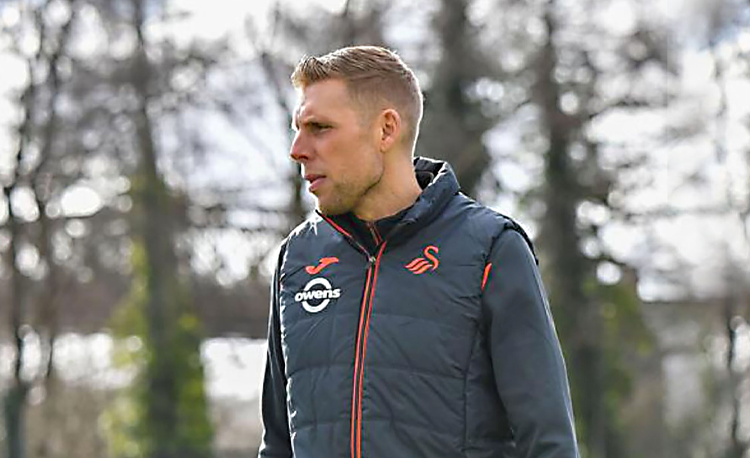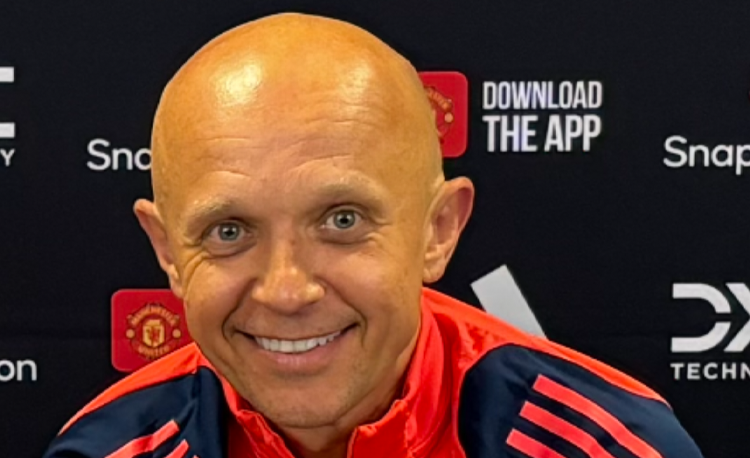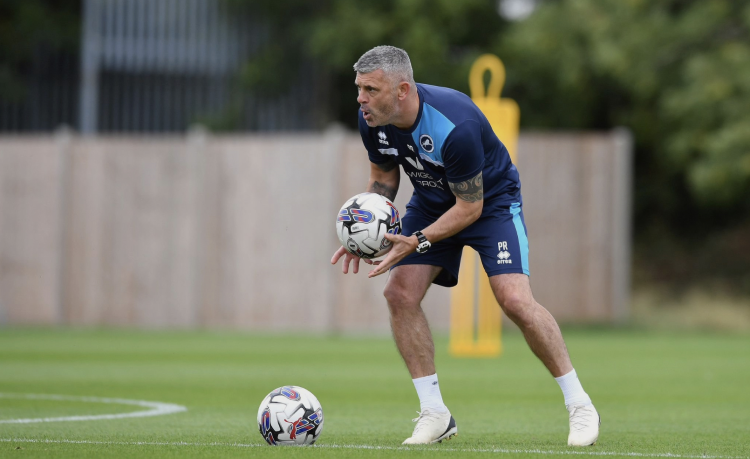You are viewing 1 of your 1 free articles
Overload attacking
This session is based on a small-sided game with overloads producing overlapping attacking play.
| Area | 40x20 yards |
| Equipment | Ball, cones, goals |
| No. of Players | 12 (2 teams of 6) |
| Session Time | |
This session is based on a small-sided game with overloads producing overlapping attacking play.
It’s a great session for attackers and defenders and is played at high intensity, because this promotes a competitive edge in training. The tight playing area is good for concentration levels, with strikers encouraged to work for angles and develop proficient timing of runs and passes.
At Yeovil Town, we will work on this session once a week and frequently witness the rewards in matches. In this season’s FA Cup, we went 2-0 up in our second round match at Hartlepool United when Ed Upson successfully utilised the type of over-lapping overload as practised in this move, to finish well past the goalkeeper.
What do I get the players to do?
With a goal at each end, we begin with a 3v2 scenario. The red team of three starts from the defensive ‘dead ball’ line, attacking with an overload and looking to score in the goal protected by the blue team. If a blue player wins possession, play goes back the other way. If a red player shoots, whether successful or not in scoring, he leaves the playing area. His team-mates on the pitch are now defenders.
The two blues also leave the area to be replaced by three team-mates - these are now attackers; with play switching back in the other direction as a new 3v2 attacking overload.
After each successive shot on goal, or if the ball goes out of play, players leave and join the area in a continuous round-robin format. We play this for three rounds of four minutes.
1
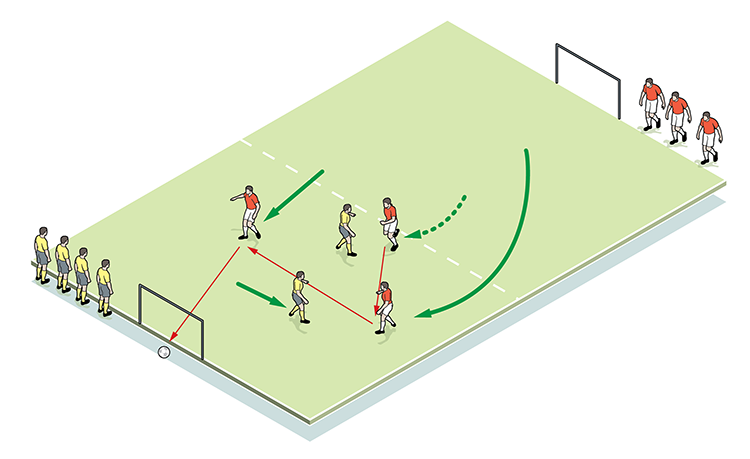
2
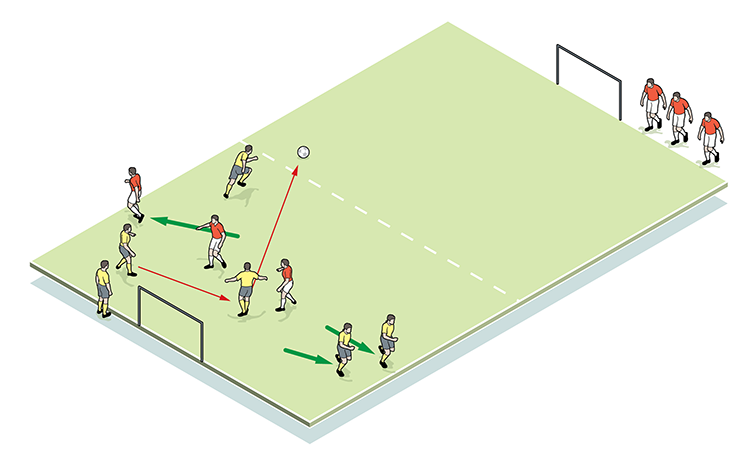
3

What are the key things to look for technically/tactically?
When on the attack, we are looking for the team of three to get a man on the overlap because this is a great rehearsal for counter-attacking play and instinctive finishing. The player on the ball should always run at the opposition so as to draw a defender in, enabling team-mates to overload against one remaining defender. If the defender chooses to drop off, the attacker can shoot himself.
A defender’s priority is to try to show opposition players wide, narrowing potential shooting angles. Decision-making must be swift and exact, and the more a defender tightens play, the more time he creates for himself and his team-mate.
How do I progress the session?
We add in an extra player on each team to make the practice more difficult for attackers, since they have only 33% more players in a 4v3, compared to 50% in a 3v2.
To make the practice more difficult for defenders, we increase the playing area, offering greater scope for attackers looking to use and break into space, both on the wings and in behind the defence.
4

5
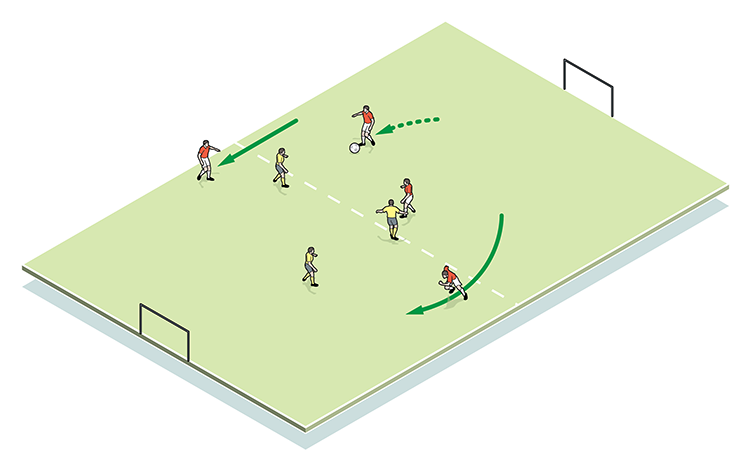
How would you put this into a game situation?
We finish the session with an 8v8 game on a pitch measuring 60x40 yards, with no keepers. Players must illustrate the use of overloads and overlaps as rehearsed.
6
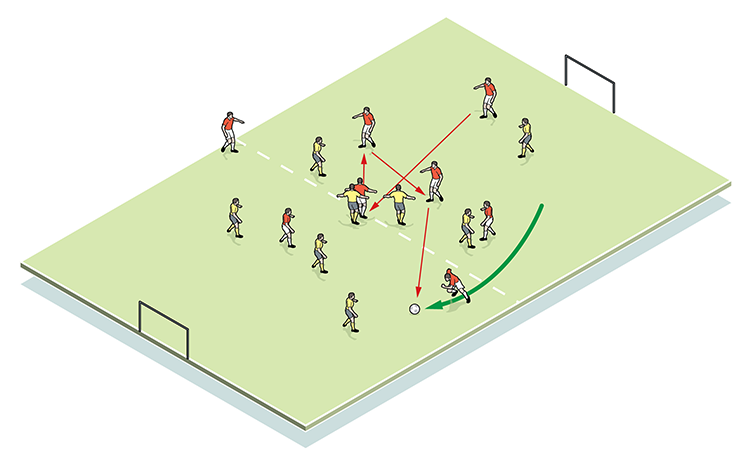
Related Files
Editor's Picks
Using the goalkeeper in build-up play
Pressing principles
Intensive boxes drill with goals
Penetrating the final third
Creating and finishing
My philosophy
Pressing initiation
Compact team movement
Defensive organisation
Coaches' Testimonials

Alan Pardew

Arsène Wenger

Brendan Rodgers

Carlos Carvalhal

José Mourinho

Jürgen Klopp

Pep Guardiola

Roy Hodgson

Sir Alex Ferguson

Steven Gerrard
Coaches' Testimonials

Gerald Kearney, Downtown Las Vegas Soccer Club

Paul Butler, Florida, USA

Rick Shields, Springboro, USA

Tony Green, Pierrefonds Titans, Quebec, Canada
Join the world's leading coaches and managers and discover for yourself one of the best kept secrets in coaching. No other training tool on the planet is written or read by the calibre of names you’ll find in Elite Soccer.
In a recent survey 92% of subscribers said Elite Soccer makes them more confident, 89% said it makes them a more effective coach and 91% said it makes them more inspired.
Get Monthly Inspiration
All the latest techniques and approaches
Since 2010 Elite Soccer has given subscribers exclusive insight into the training ground practices of the world’s best coaches. Published in partnership with the League Managers Association we have unparalleled access to the leading lights in the English leagues, as well as a host of international managers.
Elite Soccer exclusively features sessions written by the coaches themselves. There are no observed sessions and no sessions “in the style of”, just first-hand advice delivered direct to you from the coach.
